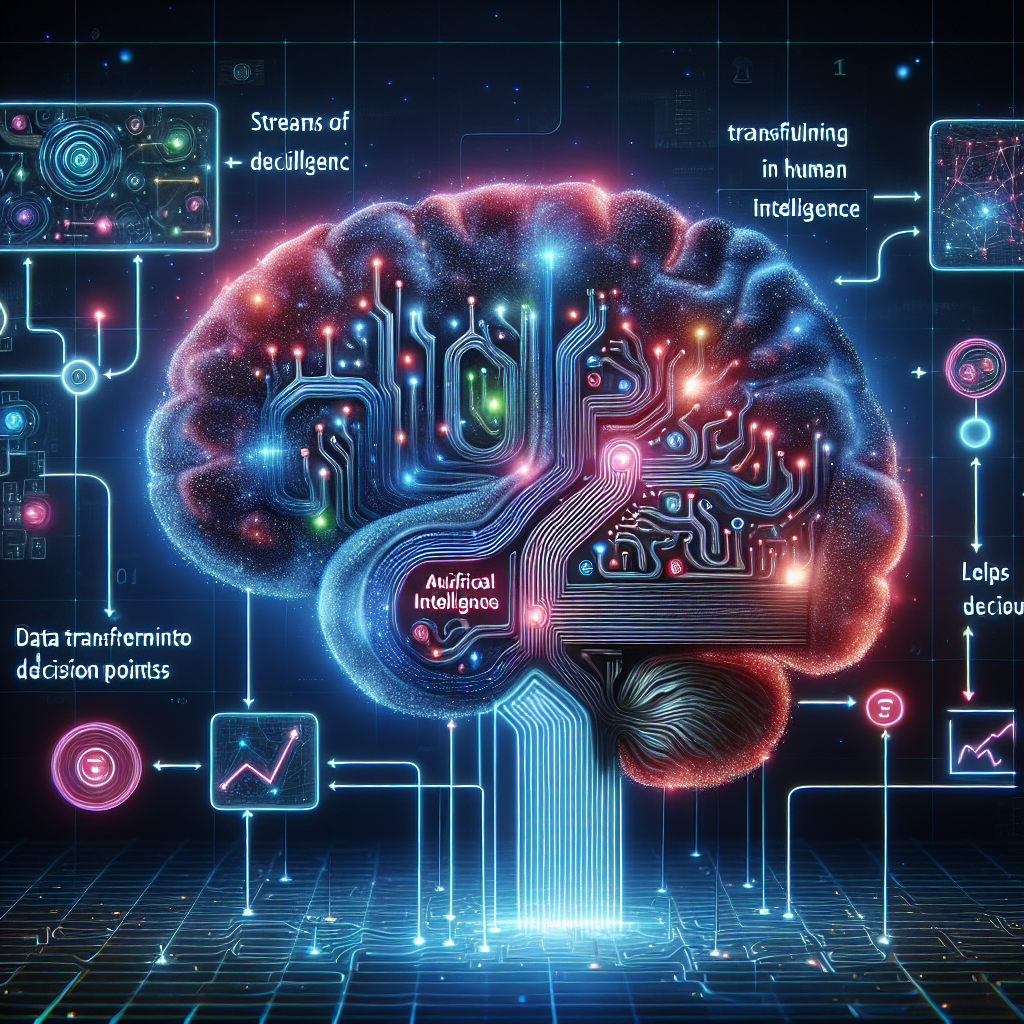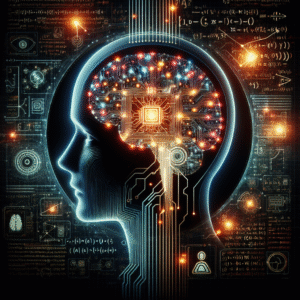From Data to Decisions: How AI Mimics Human Intelligence
In the past decade, artificial intelligence (AI) has transformed from a futuristic concept into a tangible tool integrated into daily life. From voice assistants like Siri and Alexa to personalized recommendations on Netflix and Spotify, AI seems to be everywhere. But what lies beneath these applications is a sophisticated process of mimicking human intelligence, enabling machines to make data-driven decisions with remarkable accuracy.
Understanding AI: The Basics
AI refers to the simulation of human intelligence in machines programmed to think and learn like humans. It encompasses various subfields, including machine learning, natural language processing, and computer vision. These domains work together to process data, recognize patterns, and make decisions with minimal human intervention.
Machine learning, a subset of AI, focuses on developing algorithms that allow machines to learn from and make predictions based on data. By feeding vast quantities of information into models, machines can improve their performance over time without being explicitly programmed for each task.
The Data Foundation
Data is the lifeblood of AI systems. Just as humans rely on their experiences and knowledge to make decisions, AI systems require data to identify patterns and learn from them. This data can come from a variety of sources—text, images, sounds, or even raw numbers.
For example, in a self-driving car, data is collected from cameras, sensors, and GPS. This data is then processed to understand the car’s surroundings, predict other vehicles’ movements, and make real-time decisions about navigating roads. Similarly, in the medical field, AI systems can analyze vast datasets of patient records to identify disease patterns and recommend personalized treatment plans.
Learning Like Humans: Training and Algorithms
One of the fundamental ways AI mimics human intelligence is through its learning processes. Just as humans learn from experience, AI systems use training data to hone their skills. During this training phase, machines are exposed to vast datasets and utilize algorithms to identify patterns and make predictions.
Types of Learning
AI systems employ various learning paradigms, each inspired by different aspects of human cognition:
-
Supervised Learning: This involves training an AI model on a labeled dataset, meaning that the input comes with the correct output. The system learns by comparing its predictions with the actual outcomes and adjusting its algorithms to minimize errors. It’s akin to a student learning from a teacher providing feedback.
-
Unsupervised Learning: In this approach, the AI model explores patterns in data without any labels. It’s similar to humans discovering structure in the world around them without explicit guidance. This type is often used for clustering and association tasks.
- Reinforcement Learning: This mimics the way humans learn through trial and error. By interacting with an environment, the AI system receives feedback in the form of rewards or penalties. Over time, it learns to maximize rewards by adjusting its strategies. Reinforcement learning is critical for applications like robotic control and game playing.
Decision-Making in AI
Once trained, AI systems make decisions by interpreting new data through the lens of the patterns and rules they’ve learned. For example, AI-powered recommendation systems analyze past user behavior to suggest new products or content. This process involves understanding user preferences and predicting future actions, mimicking how humans recommend items to friends based on shared tastes.
In fields like healthcare, AI systems analyze patient data to aid in diagnosis and treatment plans. By recognizing patterns often invisible to human eyes, AI can provide insights into disease progression and potential therapeutic approaches. Similarly, in finance, AI models assess market trends and data, aiding in investment decisions and risk management.
The Role of Deep Learning
Deep learning, a subset of machine learning, plays a crucial role in achieving human-like decision-making in AI. Deep learning models, often based on artificial neural networks, are inspired by the structure and function of the human brain. These networks consist of layers of interconnected nodes that process information hierarchically.
A deep learning model can automatically learn to identify features in raw data, such as detecting edges in an image or nuances in speech. This ability to work with unstructured data sets AI apart, enabling applications in image recognition, speech synthesis, and more.
Challenges and Ethical Considerations
While AI has the potential to revolutionize industries, it also presents challenges that need addressing:
-
Bias and Fairness: AI systems can inadvertently learn biases present in training data, leading to unfair outcomes. Ensuring fairness and transparency in AI decision-making is critical to avoiding discrimination.
-
Data Privacy: The reliance on vast datasets raises concerns about data security and privacy. Protecting sensitive information while harnessing the power of AI is a delicate balance.
-
Accountability: Determining responsibility when AI-driven decisions go awry is complex. Creating frameworks to ensure accountability and rectify errors is essential.
- Job Displacement: As AI automates tasks, it raises concerns about job displacement. Preparing the workforce for an AI-driven future through education and reskilling is crucial.
The Future of AI in Decision-Making
As AI continues to evolve, its capabilities in decision-making will only expand. Approaches such as explainable AI are emerging to enhance understanding of how AI makes decisions, making systems more transparent and trustworthy.
The integration of AI with technologies like the Internet of Things (IoT) and blockchain promises new possibilities for industry innovation. With ongoing advancements, AI could tackle complex societal challenges, from climate change to healthcare accessibility.
Conclusion
AI’s journey from data to decisions is a testament to its potential to emulate aspects of human intelligence. By harnessing massive datasets and sophisticated algorithms, AI systems have become adept at making accurate, timely decisions across diverse fields. However, balancing innovation with ethical considerations remains paramount to ensure AI serves humanity positively and equitably. As we advance further into the age of AI, fostering collaboration between technologists, ethicists, and policymakers will be crucial in shaping an intelligent future that benefits all.




